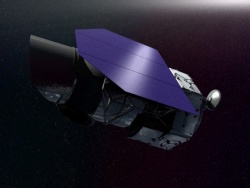
After several years of preliminary studies, the National Board of the USA on Aeronautics and space research (NASA) has given the formal start of a new astrophysics mission whose objective is the study of the mysteries of the Universe.

The project bears the name WFIRST — Wide Field Infrared Survey Telescope. It provides for the creation of a powerful space Observatory that can observe 100 times more land space than the orbital telescope “Hubble” (Hubble).
The new device will operate in the near infrared part of the spectrum. It is assumed that it will help study dark energy and dark matter. In addition, WFIRST will allow the study of extrasolar planets and to search for potentially habitable worlds.

Mission WFIRST is planned to achieve after the launch of the space telescope “James Webb” (James Webb Space Telescope). This Observatory will be sent into space by the carrier rocket “Ariane-5” (Ariane 5): launch scheduled for October 2018. To perform the first scientific tasks the machine will be able to start in the spring of 2019.
The launch of the WFIRST telescope is scheduled for mid 20-ies. The device will be launched into the Lagrangian point L2 in the system “Sun — Earth” at a distance of 1.5 million kilometers from our planet.







